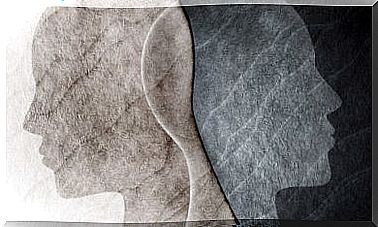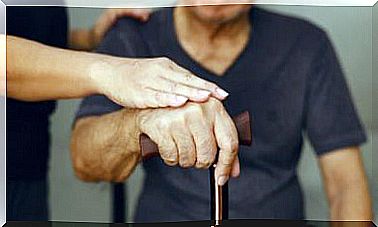At What Ages Do Mental Health Disorders Appear?

At what ages do mental health disorders appear? Beyond the curiosity that this question may arouse, there is a relevant scientific and medical interest. We know, for example, that anxiety disorders appear in 5-year-old children and that eating disorders are increasingly common in 13 and 14-year-old adolescents.
Having an age range in which certain clinical conditions begin to be predominant can help us on several fronts. The first, in prevention. The second, in better care and response in all areas: social, medical, educational, psychological, etc. We are all susceptible to developing a mental health problem, including children.
There is also another aspect that we must consider. No psychological condition appears out of nowhere and overnight. Realities as harsh as schizophrenia, for example, despite being more reliably diagnosed between the ages of 19 and 21, show their first signs in adolescence.
This is undoubtedly a highly relevant issue that we should keep more in mind.

At what ages do mental health disorders appear?
Mental illnesses and disorders encompass various typologies and spectra of severity. Many times they intermingle with each other, they appear at a specific moment in our life or perhaps they are a constant. Be that as it may, there is something we must always consider. Each person is unique and each individual presents their own reality that must be understood.
Despite this, there are patterns and those facts that tend to be repeated in the population are what allow science to establish better diagnoses. In this way, research works as recent as that carried out by the University of Cambridge in collaboration with the College of London, the University of Padua in Italy and the University of Toronto in Canada indicate something important.
We already know at what ages mental health disorders appear. Now, we have percentiles that warn us at what moments in time certain psychological conditions begin to manifest. Having these indicators clear requires us to develop better prevention and intervention mechanisms.
Mental disorders start sooner than we think
When we think of people with phobias or anxiety disorders, it is easy to instantly visualize an adult. However, 5-year-olds already show clear symptoms of anxiety. This is a revealing fact that this work has left on the table, in which more than 192 studies were integrated with a sample close to one million people.
While it is true that a part of psychological disorders may have a genetic or biological basis, there are other variables that we must not lose sight of. Family and social environment are significant factors.
At what ages do mental health disorders appear?
If we ask ourselves at what ages do mental health disorders appear, scientists turned their attention to the most important clinical entities.
Something that they were able to show again and that was previously known is that all serious disorders (such as schizophrenia) are usually preceded by less serious disorders in adolescence, and that these are rarely treated.
Let us therefore see those age cohorts for each psychological condition:
- Neurodevelopmental disorders ( attention hyperactivity disorder (ADHD), learning, communication disorders or autism spectrum disorder (ASD): on average, they appear at 5½ years.
- Anxiety and phobias: 5 years
- Eating behavior disorders (anorexia, bulimia, binge eating …). They appear already at 14 years old.
- Obsessive compulsive disorder (OCD): 14 years.
- Stress disorders usually appear at the age of 15.
- Mood disorders: 20 years.
- Addictions: 19 years.
- Personality disorders: 20 years.
- Schizophrenia: 19-21 years.

What is the implication of knowing these data?
Knowing at what ages mental health disorders appear is not mere curiosity, it is of clinical relevance. It is because studies like this show us that we are neglecting our teenagers. Many times, we attribute certain behaviors to the problems of age, to that maturation of the personality in which, according to many, ups and downs, crises, anxieties are common …
To think that what happens to our 14-year-old daughter “is just a phase” or what our 15-year-old son says or does is “a thing of age and that it will pass” is a mistake.
Something that much of the research shows us is that about 50% of disorders of adulthood had their onset in adolescence. Neglecting the anxiety of the 7-year-old can lead to the 15-year-old falling, for example, into self-injurious behaviors or purging behaviors (bingeing and subsequent vomiting). Later, you will be at risk of developing major depression.
In essence, mental health care for children and adolescents is an essential pillar in any advanced society. Children and young people who are cared for and helped in an effective, adequate and comprehensive way have a greater chance of becoming happy adults, with adequate tools to face life’s problems.









